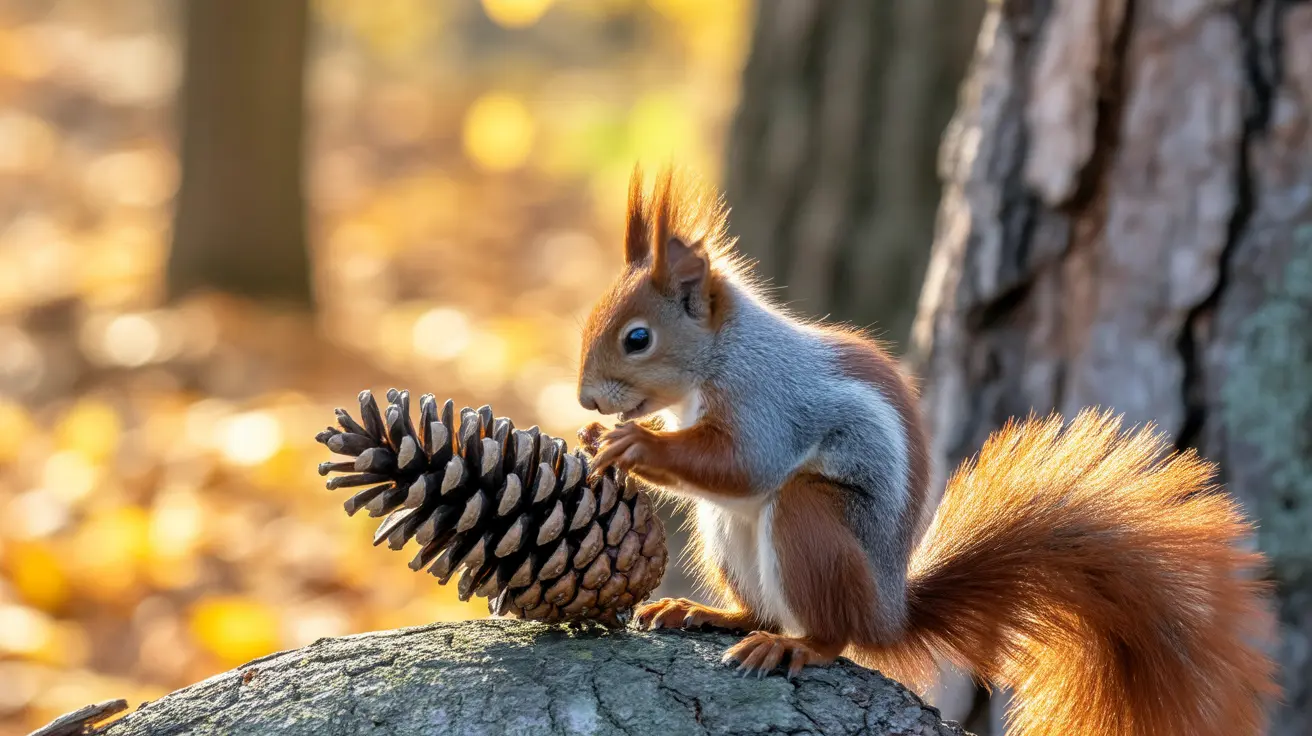Building a Healthy Bond with Your Cat Beyond Feeding: The Complete Guide to Feline Affection
Many cat owners fall into the trap of believing that feeding their feline companion is the primary way to express love and build a strong relationship. While providing nourishment is essential for your cat's survival, mistaking food as the main language of love can actually harm both your pet's health and the quality of your bond. Understanding how to build a healthy bond with your cat beyond feeding opens up a world of deeper, more meaningful connections that benefit both you and your feline friend.
This comprehensive guide will help you recognize why food-focused relationships can be problematic and provide you with proven strategies to create a more balanced, trust-based bond. From understanding feline behavior to implementing interactive play routines, you'll discover how authentic cat affection extends far beyond the food bowl.
Understanding Why Food Isn't Love for Cats
For cats, food represents survival rather than an emotional gesture. Unlike humans who often associate meals with social bonding and emotional connection, cats view feeding as meeting a basic biological need. When cat owners consistently use food as their primary method of showing affection, they inadvertently create an imbalanced relationship dynamic.
This food-centric approach can lead to several problems. Cats may learn to demand food as a way to gain their owner's attention, not necessarily because they're seeking love or genuine connection. Over time, this behavior can escalate into persistent meowing, pawing, and demanding behaviors that many owners interpret as affection when it's actually attention-seeking.
Additionally, overfeeding as an expression of love often results in unhealthy weight gain, which can lead to serious health complications including diabetes, arthritis, and decreased lifespan. Creating a cycle where cats associate more food with increased attention distorts the natural human-cat relationship and can prevent the development of deeper emotional bonds.
Recognizing Authentic Cat Affection Beyond Food
Cats express genuine affection through a variety of behaviors that have nothing to do with food. Understanding these authentic signs of feline love helps you recognize when your cat is truly bonded to you and seeking emotional connection rather than just sustenance.
Physical Signs of Affection
Genuine cat affection manifests through specific body language and physical behaviors. When a cat sits within an arm's reach of you, they're demonstrating trust and a desire for proximity without necessarily wanting anything from you. Rubbing against you serves to mark you as safe and claim you as part of their social group through scent marking.
One of the most significant signs of trust occurs when cats show their belly or sleep near you. These vulnerable positions indicate that your cat feels completely secure in your presence. Similarly, when cats engage in slow blinking while looking at you, they're communicating non-threat and affection - often called "cat kisses."
Behavioral Indicators of Bonding
Cats who are truly bonded to their owners will follow them around the house, not because they're expecting food, but because they enjoy their company. Grooming behaviors, such as licking your hand or arm, replicate the social grooming cats do with other cats they care about.
Vocalizations also play a crucial role in feline affection. Cats often develop specific meows, purrs, and chirps that they use exclusively with their favorite humans. These sounds are different from food-demanding vocalizations and typically occur during quiet, calm moments of interaction.
Creating Interactive Play Routines for Deeper Bonding
Interactive play represents one of the most effective ways to build a healthy bond with your cat beyond feeding. Regular play sessions satisfy your cat's natural hunting instincts while creating positive associations with your presence and interaction.
Implementing Daily Play Sessions
Establish consistent playtime routines once or twice daily using toys that mimic prey, such as wand toys and laser pointers. Vary the toys regularly to maintain your cat's interest and engagement. During play sessions, allow your cat to "catch" their prey periodically and offer praise when they do so successfully.
The key to effective bonding through play lies in reading your cat's energy levels and preferences. Some cats prefer vigorous, athletic play sessions, while others enjoy gentler, more strategic hunting games. Observing and adapting to your individual cat's play style demonstrates understanding and respect for their personality.
Benefits of Interactive Play
Regular interactive play keeps cats physically and mentally healthy while building positive associations with human interaction. Unlike food-based bonding, play sessions provide mental stimulation, physical exercise, and emotional satisfaction without the risk of overfeeding or creating unhealthy dependencies.
Play also helps reduce anxiety and stress in cats, particularly those who are naturally shy or have experienced trauma. The confidence gained through successful hunting play translates into overall emotional well-being and stronger trust in their human companions.
Establishing Healthy Feeding Practices
While moving beyond food-focused bonding, it's still important to use feeding as one tool in building your relationship - just not the primary one. Healthy feeding practices can support bonding without creating unhealthy dependencies or weight issues.
Structured Feeding Schedules
Feed your cat measured meals twice daily at consistent times rather than free-feeding. This approach encourages cats to come to you and creates positive associations with your presence during mealtimes. Scheduled feeding also allows you to monitor your cat's appetite and health more effectively.
When providing meals, focus on the routine and consistency rather than the quantity. Cats thrive on predictable schedules, and regular feeding times provide security and structure that strengthen your bond through reliability rather than overindulgence.
Using Treats Appropriately
Reserve cat-friendly treats as rewards for learned behaviors rather than unconditional expressions of affection. This approach helps reinforce training and positive behaviors while maintaining treats as special rewards rather than expected handouts.
Consult with your veterinarian about the best treat options for your cat and ensure treats comprise no more than 10% of your cat's daily caloric intake. This moderation prevents weight gain while maintaining the special nature of treat-giving moments.
Alternative Ways to Show Affection
Building a healthy bond with your cat beyond feeding requires diversifying your expression of affection through various activities and interactions that hold genuine emotional value for felines.
Grooming and Physical Affection
Many cats enjoy gentle brushing sessions, which replicate the social grooming behaviors cats share with their family members. Introduce daily brushing gradually, pairing it with soft praise and gentle conversation to build positive associations.
When offering physical affection, respect your cat's preferences for petting areas. Most cats enjoy gentle strokes between their ears, at the base of their ears, under their chin, along their back, and on their sides. Avoid touching feet, tail, and underbelly until you've established strong trust.
Environmental Enrichment
Create a comfortable, stimulating environment that demonstrates care for your cat's well-being beyond food provision. Provide clean litter boxes, comfortable hiding spots, scratching posts, and rotating toy selections to keep your cat entertained and mentally stimulated.
Consider introducing new experiences safely based on your cat's temperament, such as puzzle toys, climbing structures, or even supervised outdoor time in a catio. These environmental improvements show thoughtful consideration for your cat's natural needs and preferences.
Transitioning from Food-Focused to Balanced Bonding
If you've previously relied heavily on food to bond with your cat, gradually shifting expectations requires patience and consistency. Begin by reducing the frequency of treats while simultaneously increasing other forms of positive interaction.
Implementing Gradual Changes
Start incorporating more interactive play sessions while maintaining your current feeding schedule. As your cat begins to enjoy and expect these play sessions, you can gradually reduce treat-giving frequency. Replace treat-offering moments with brief petting sessions or play interactions.
Pay attention to your cat's responses during this transition period. Some cats may initially seem confused by the changes, but most will adapt quickly when they discover that playtime and attention provide equal or greater satisfaction than extra treats.
Building Trust Through Consistency
Consistency in your new approach helps cats feel secure and understand the new relationship dynamic. Maintain regular schedules for feeding, play, grooming, and quiet companionship. This predictability fosters security and deepens your emotional bond over time.
Remember that building authentic bonds takes time, especially if you're changing established patterns. Be patient with both yourself and your cat as you develop new ways of connecting and showing affection.
Frequently Asked Questions
- How long does it take to transition from food-focused bonding to other forms of affection?
The transition time varies depending on your cat's personality and how established the food-focused patterns are. Social cats may adapt within a few weeks, while more reserved cats may take several months to fully embrace alternative bonding activities. The key is maintaining consistency and patience throughout the process.
- Will my cat still love me if I stop giving treats as frequently?
Yes, cats are capable of forming deep emotional bonds that extend far beyond food provision. In fact, cats often develop stronger, more authentic relationships when bonding includes diverse activities like play, grooming, and environmental enrichment. Your cat may initially seem confused by the change, but will likely become more engaged in other forms of interaction.
- How can I tell if my cat is seeking attention versus actually hungry?
Cats seeking attention often display demanding behaviors like persistent meowing, pawing, or following you around, especially if they've been recently fed. Truly hungry cats typically show interest in food specifically and may go directly to their feeding area. Learning to read your cat's body language and maintaining consistent feeding schedules helps distinguish between these behaviors.
- What are the best interactive toys for bonding with my cat?
Wand toys and laser pointers are excellent for mimicking prey and satisfying hunting instincts. Puzzle toys provide mental stimulation, while feather toys and small balls can encourage independent play. Rotate toys regularly to maintain interest, and always supervise laser pointer play to prevent frustration by ending sessions with a physical toy your cat can "catch."
- Is it normal for some cats to prefer less physical affection?
Absolutely. Each cat has a unique personality and preferred ways of showing and receiving affection. Some cats enjoy extensive petting and cuddling, while others prefer sitting nearby or engaging in play as their primary bonding activity. Respecting your cat's individual preferences strengthens your bond more than forcing unwanted physical contact.
- How do I know if I'm overfeeding my cat while trying to show love?
Signs of overfeeding include visible weight gain, decreased activity levels, and increased begging behaviors. Consult your veterinarian about your cat's ideal weight and feeding requirements. Generally, adult cats should eat measured meals twice daily rather than having constant access to food. If you can't easily feel your cat's ribs or notice a loss of waist definition, you may be overfeeding.
Conclusion
Building a healthy bond with your cat beyond feeding creates a richer, more meaningful relationship that benefits both you and your feline companion. By understanding that cats don't interpret food as an emotional gesture, you can avoid the pitfalls of overfeeding while developing more authentic connections through play, grooming, environmental enrichment, and respectful affection.
The journey toward balanced bonding requires patience and understanding, but the rewards are substantial. Cats who receive diverse forms of attention and care typically display greater trust, confidence, and genuine affection toward their human companions. Remember that every cat is unique, and building the strongest possible bond means respecting your individual cat's personality while providing consistent, loving care that extends far beyond the food bowl.






